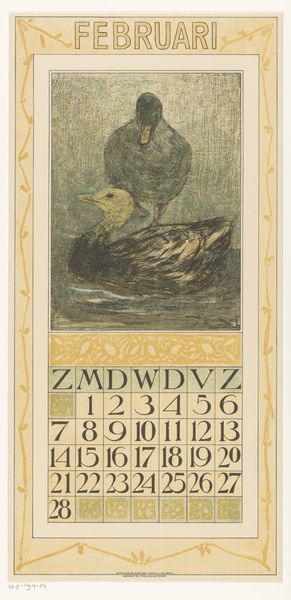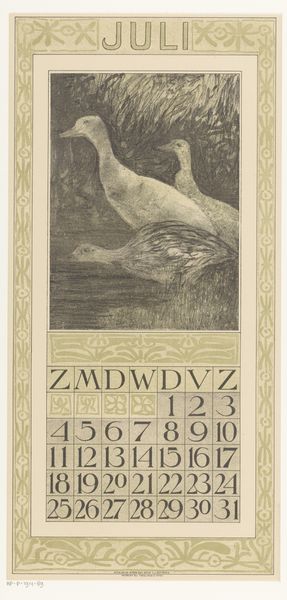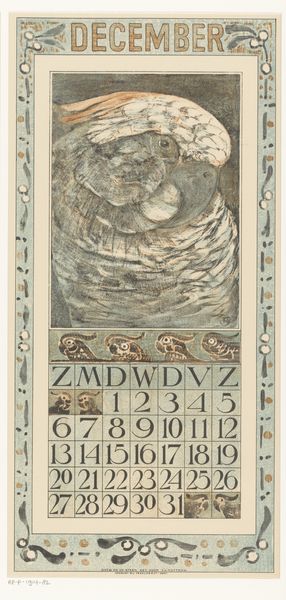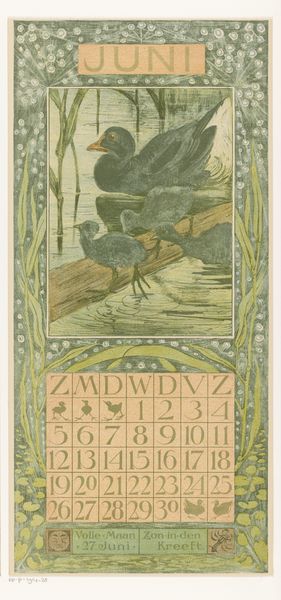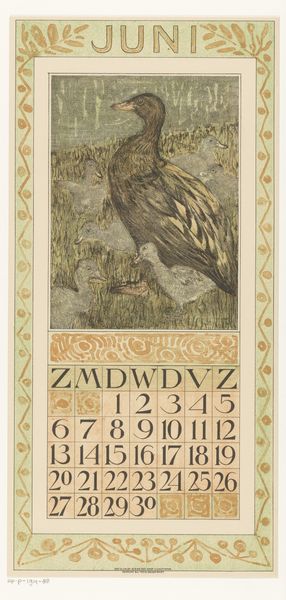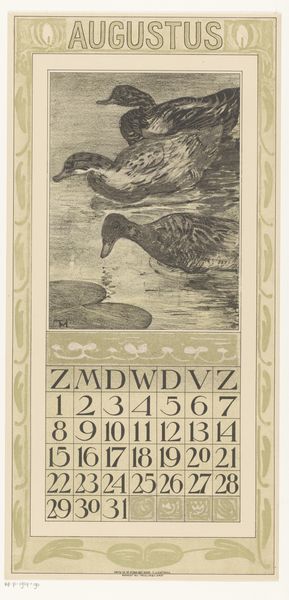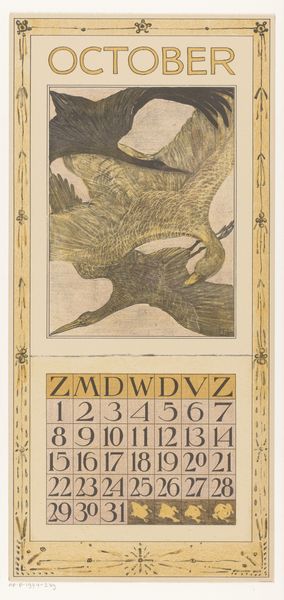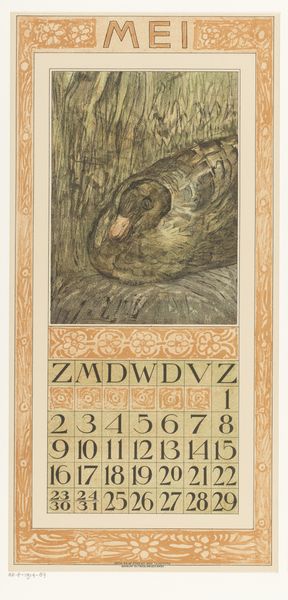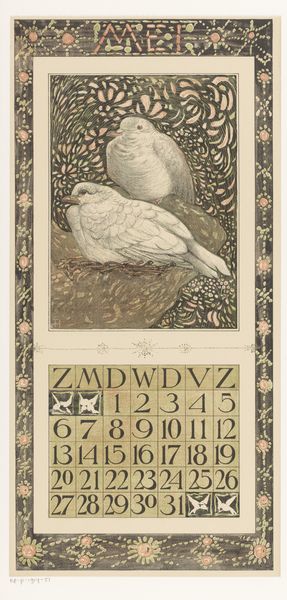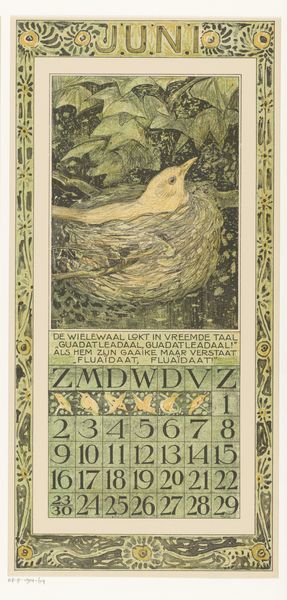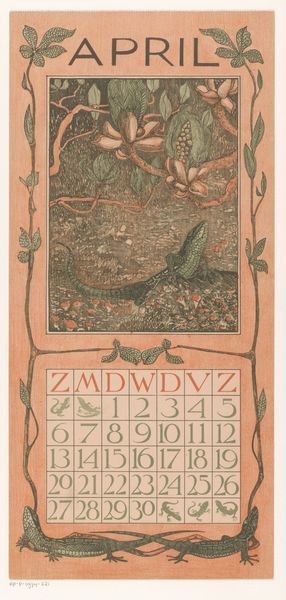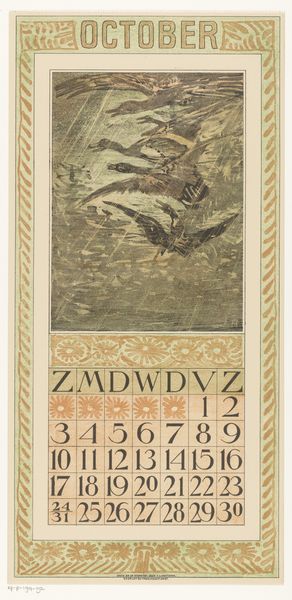
Dimensions: height 440 mm, width 210 mm
Copyright: Rijks Museum: Open Domain
Curator: Here we have Theo van Hoytema's "Kalenderblad april met twee zwemmende eenden," or "April Calendar Sheet with Two Swimming Ducks," created in 1908. Editor: It possesses an immediate sense of tranquility; the subdued palette and delicate lines lend a softness that is quite captivating. Curator: Indeed. Let's delve into the composition. The ducks are placed asymmetrically, yet balanced, in the upper portion of the work. The lines created by the water and the birds' bodies create a dynamic interplay. The materiality is critical: as a print, the texture adds depth. Editor: Beyond the formal considerations, the choice of ducks speaks to a recurring motif in art – representing adaptability and the embrace of life's currents. And it is an evocation of springtime. Calendar art in general serves to measure and therefore control time—in contrast, this image embodies something natural. Curator: Consider also the influence of Japanese Ukiyo-e prints. Van Hoytema adopted the flat perspective and decorative elements characteristic of that tradition, specifically for its commercial calendar designs. Editor: Yes, and if we view this through an iconographic lens, the April calendar itself can be seen as a symbol of renewal and hope. The presence of the swimming ducks further reinforces this idea; these animals represent springtime, and rebirth after a long winter. Curator: Ultimately, it's a remarkable example of Art Nouveau, blending fine art with functional design to create something aesthetically pleasing and useful, with careful construction throughout the whole picture. Editor: Agreed. The artwork presents a synthesis of thematic intent and aesthetic strategy to enrich the observer's understanding. Thank you.
Comments
No comments
Be the first to comment and join the conversation on the ultimate creative platform.
